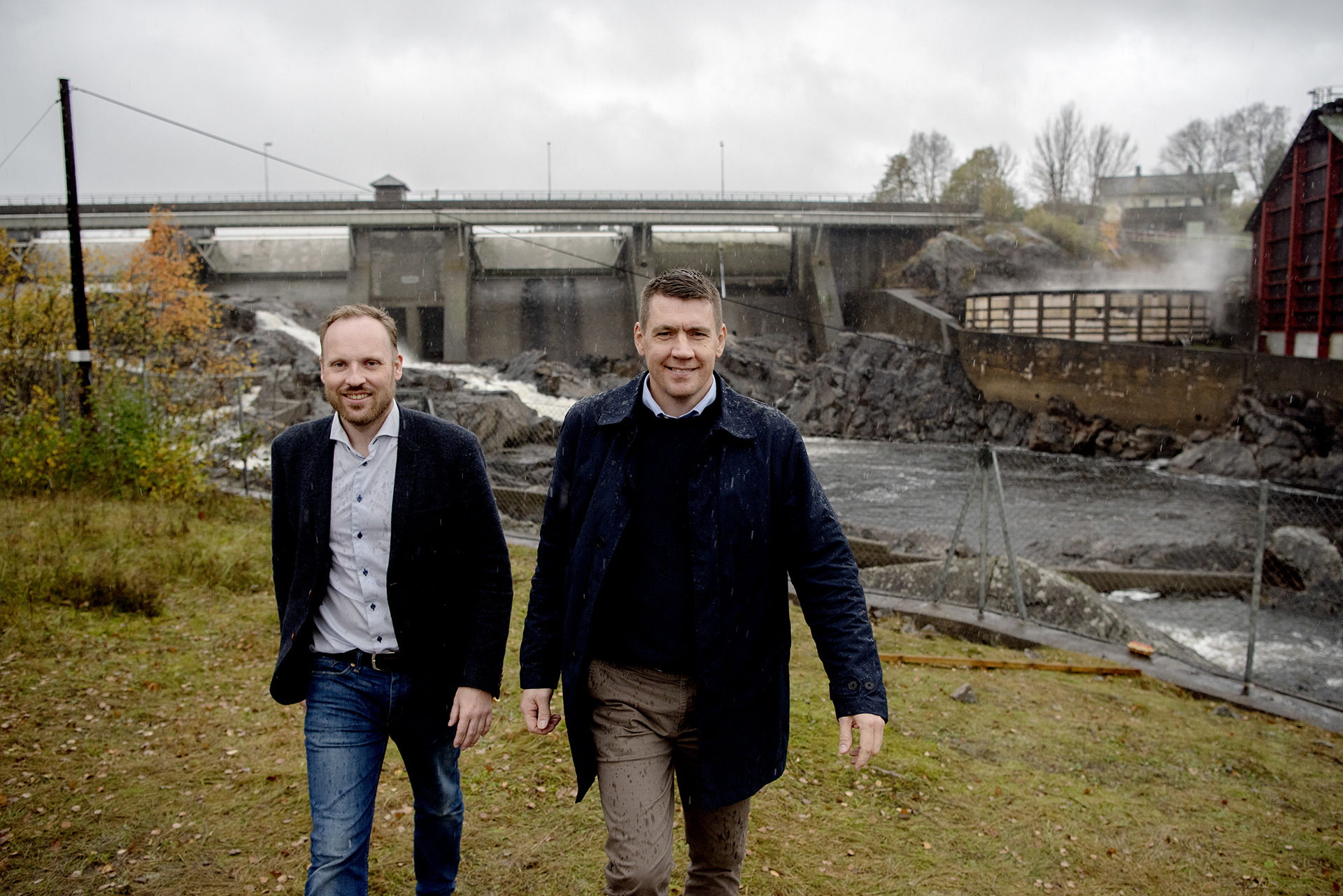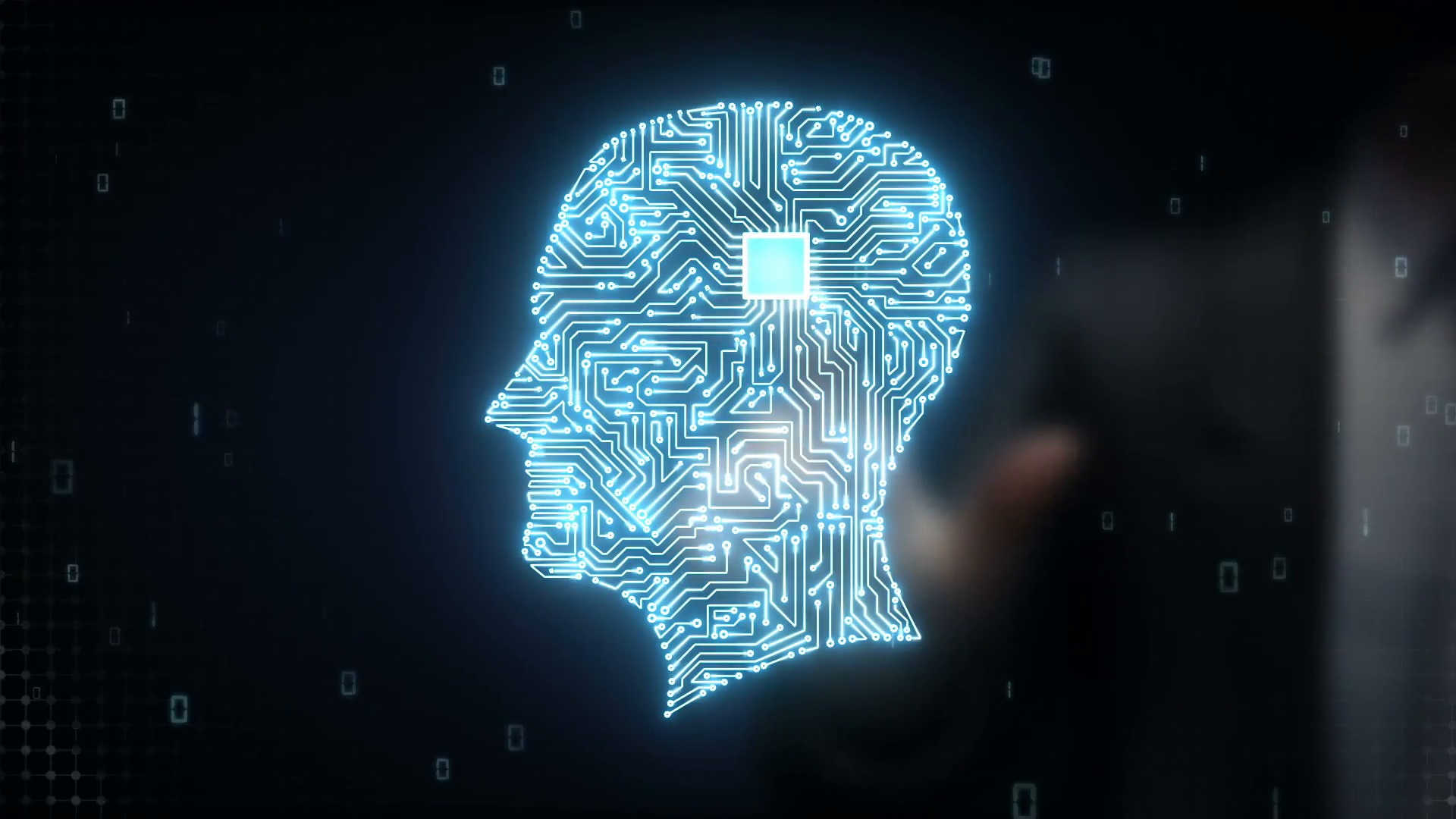Intelligent progress
Alf Inge Molde and Jan Inge Haga (photos)
It has taken time to gather strength, but the digitalisation wave is now washing over the oil industry with full force. The opportunities offered by artificial intelligence (AI) are huge.

Illustration: Virtual Reality Times
After a couple of dry weeks, the heavens have opened their biggest taps over the south Norwegian port of Grimstad in late October. Personnel at hydropower generator Agder Energy are following developments closely.
The big water flow in the local Nidelva river is being held back for the moment here at the Rygene power station, which uses a 38-metre head to generate about 280 gigawatt-hours a year.
How the predicted heavy rainfall develops over the night and the coming days will determine how much of the water must be released from storage.
The mathematical model used to determine the opening and closing of the sluices at Agder Energi’s 47 power stations in order to optimise power generation is roughly 30 years old.
This complex job must balance a number of factors to minimise flood hazard, maximise energy output and earnings from the reservoirs, and ensure viable conditions for salmon in the river.
At the same time, account must be taken of predicted precipitation in the mountains. All this means it has proved difficult to relate the mathematical models with reality.
The power company is now collaborating with the Centre for Artificial Intelligence Research (Cair) at the University of Agder, a leader in its field.
This partnership aims to develop an AI method which can provide new and more efficient solutions by using trial and error from running a huge number of simulations.
Supported by the Research Council of Norway’s EnergiX programme, the three-year research project is regarded as promising.
That view comes from professor and Cair director Ole-Christoffer Granmo and Bernt Viggo Matheussen, senor adviser to Agder Energi and head of industrial research at the AI centre.
If their work proves successful, they will be the first in the world to apply AI for managing hydropower generation. The solution will be transferrable to any power station.
Cair
What: the Centre for Artificial Intelligence Research at the University of Agder is Norway’s first scientific institute concentrating solely on AI. Opened officially on 2 March 2017. Who: International team of 20 researchers with expertise in theory, algorithms and philosophy related to AI. Priority areas: Pursues basic research but also pays attention through collaboration deals to health care and electricity generation.
Buzzwords
AI and neural networks have become buzzwords in recent years, but the roots of the technology extend back to the 1950s. Put simply, such networks are data structures and algorithms inspired by the organisation of human brain cells.
The aim is to imitate the way these work with billions of other cells on the basis of sensory impressions when the brain takes decisions.
By learning from example, neural networks are able to recognise patterns in large volumes of information and establish relationships through trial and error.
Image analysis was one of the challenges which attracted much attention in the early decades, with scientists building more advanced filters layer by layer.
These addressed everything from object composition to understanding a scene in order to distinguish objects in it – like houses and animals – from one another.
Collectively, these filter layers resembled a shaky tower with many possible sources of error. The results were often disappointing.
The breakthrough came in 2006, where two researchers came up with a method which allowed computers to build layer-by-layer analyses on their own.
That yielded robust, layered neural networks which gradually transform pixels in an image into an accurate classification of content.
The results proved very good. From delivering at best what the scientists had asked the machine for, AI now produces outcomes they had not dreamt of in advance.
Using trial and error through millions of simulations, the programmes learn for themselves what works. “What was science fiction earlier is just science today,” says Granmo.
Digital
The oil service sector has worked with AI since the 1990s, and a number of solutions for “digital oilfields” have been developed. But these have only been partially utilised.
Digitalisation and integrated operations (IO) were also high on the industry’s agenda about a decade ago.
The Norwegian Oil and Gas Association estimated that as much as NOK 300 billion could be saved by collaboration, new ways of working and real-time data sharing between sea and shore.
Then things quietened down, in line with rising oil prices and a high tempo in the industry.
Per Morten Hoff, former general secretary of the ICT Norway interest organisation, believes the country’s petroleum sector has come late to digitalisation compared with other players elsewhere.
That view is echoed by Anne Marit Panengstuen, CEO of Siemens Norway, which conducted a survey in cooperation with the Federation of Norwegian Industries (NI) in 2016.
This found that companies in Norway, as a whole, believe digitalisation to be important but lack the expertise and capacity to benefit from the potential it offers.
Panengstuen’s impression is that the oil industry has not been particularly active in this area – rather the opposite – and considers this a pity.
She points to the big potential offered by adopting new production methods, business models and solutions – such as sensors which allow parts to be replaced in time.
An increase in the number of unstaffed platforms is another possible benefit, while digitalisation can offer a safety benefit as well.
But she also believes that a positive trend has emerged over the past three years, driven by lower oil prices and the focus on costs.
Hoff shares that feeling. “After many years when the industry felt no need to restructure, things finally look like happening,” he says.
Demanding
“Opportunities offered by digitalisation are greater than the improvements we’ve achieved through cost reductions in recent years – but also more demanding,” says Ståle Tungesvik.
He heads a project called “competitiveness – a changing NCS” being run by KonKraft, a collaboration arena for Norwegian Oil and Gas, the NI, the Norwegian Shipowners Association and the Norwegian Confederation of Trade Unions (LO).
In his view, being a world leader for digitalisation on the NCS should be an industry goal. But the current position is fragmented.
At one extreme are companies which have done hardly anything and think that is enough, while at the other are those which have done a lot but nevertheless appreciate that they are only on the starting block.
A widespread misunderstanding is that information has a value in itself. Rejecting such a view, Tungesvik points out that what matters is a company’s ability to utilise such data.
This is where things get demanding for many, because what they are not good at themselves must be outsourced to others. They then have to share and collaborate over data.
The industry is very ready to share weather and health, safety and environmental (HSE) information. To succeed with digitalisation, however, it must take big steps forward.
That is when the questions begin to pop up – on intellectual property rights, legislation and regulations, and not least the fear that others will earn big money from the company’s own data.
“We can’t think like that,” says Tungesvik. “If others get well-qualified and earn money while helping you improve, what’s wrong with that?” He adds that IT giants such as Google claim openness wins every time.
Banks
He thinks the oil and gas industry has something to learn from interaction in the bank sector, which asks three questions: what can we do together, what can we do in the same way, and what can we do separately?
The banks compete over customers, but have nevertheless joined forces to create common payment platforms.
“We don’t share contracts,” Tungesvik emphasises. “Where exploration is concerned, for instance, much of the raw data can be shared.
“But how we evaluate the best prospects for discoveries is always an arena for competition. So what about operating and maintenance information?”
He envisages a solution similar to the technological solutions for banks and telecom companies, with data shared on platforms where everyone – regardless of who they work for – is able to talk together and understand each other.
It is only then that companies can really begin to exploit the opportunities offered by Big Data and AI. But it calls for somebody to take the lead.
In the banking sector, the small players lacked the muscle to implement such major projects. So the big banks took control and invited the others to join in later.
Expertise
Another challenge is to secure the necessary expertise, which requires the companies to recruit computer scientists and digital specialists.
These adepts do not grow on trees, Tungesvik acknowledges – for the moment, at least. At the same time, company employees must be able to explain the challenges to be overcome.
Collaboration between people who understand both computer technology and petroleum will be important. Then software and AI must be allowed to analyse data to find trends and new solutions.
That means trial and error, Tungesvik points out. “This is also a challenge – to trust that innovation comes from below and from outside.
“Operators who’re used to being in control and running things find this an unfamiliar concept, but we can see that the industry is recognising the need to become good at this.”
Easiest
Norway is among the easiest places in the world for new oil companies to get off to a flying start, argues research manager Lars Sønneland at Schlumberger Norway.
One of the most important reasons for this is that the NPD makes important information from drilling logs available and sells seismic data it acquires to anyone at a reasonable price. In other words, the Norwegian industry already shares information.
“But this can be taken further in the direction of Big Data, which is an important component in facilitating the use of AI,” Sønneland observes.
“The NPD touches on this with the basin models in its reports, but could have been better at acknowledging that explicit data models can also be shared.”
He has great faith in the use of AI. But it is not new. Schlumberger secured a patent for using this technology to analyse seismic data as long ago as 1990.
Nor are today’s algorithms all that different from those found at that time, he notes. However, computing power and bandwidth put great constraints on what could then be achieved using AI.
In addition, the experts themselves had to interpret which lines on the seismic image represented shale, clay, sand and oil-bearing sands.
Many of these practical computing obstacles have now been removed. Storage capacity in cloud solutions is virtually unlimited, as is access to raw computing power to process the data.
By training the new algorithms with numerous measurements from well logs and seismic images – Big Data, in other words – AI itself can identify combinations of this information which indicate what rocks lie where below ground.
The more details they get to train on, the better and more accurate the algorithms become.
According to Sønneland, another advance opened up by digitalisation involves the use of automation for real-time operations which were not possible earlier.
An example is provided by a new generation of geomanagement technology. This allows detailed reservoir characterisation to be secured in a window around a well using threedimensional seismic data and logging while drilling (LWD).
In partnership with the Norwegian University of Science and Technology (NTNU), further advances to this method are now being sought.
These seek to utilise four-dimensional seismic information to identify the optimum drilling targets in producing reservoirs and to optimise well completions.
“This will make it possible to adjust the well trajectory in order to hit just the lithology and oil zone you want,” explains Sønneland.
Strategy
Maria Juul, assistant director of information management at the NPD

Benefits.
Maria Juul, assistant director of information management at the NPD, is looking at the role it can play in ensuring the industry reaps benefits from digitalisation.
The NPD is now working to define its strategy for ensuring that the industry gains the benefits offered by digitalisation, says Maria Juul, assistant director of information management.
Securing an overview of the strategies being adopted by the various companies and of initiatives now being pursued on the NCS is the first item on the agenda.
Juul notes that the change processes are already under way, including better use of data. Technologies such as Big Data and AI offer new opportunities for collating information and conducting advanced analyses.
“The companies are working differently now,” Juul reports. “In recent years, we’ve seen new job titles emerging such as data scientist, data analyst and chief digital officer.
“Like the rest of the industry, we must understand the new opportunity space and the benefits this could offer for resource management.”
One measure the NPD has initiated is to review its information and associated confidentiality periods to see if the companies can be offered more data, she says.
“And we’re also developing digital solutions for improved collaboration both internally and with the industry. We’re in an incredibly exciting phase.
“The world is changing, so we must adapt and think along new lines. A key aspect is to get even better at collaborating and sharing.”
"Opportunities offered by digitalisation are greater than the improvements we’ve achieved through cost reductions in recent years – but also more demanding."
Ståle Tungesvik, project manager, KonKraft
Possible
Sharing data without revealing commercial secrets is fully possible, emphasises Granmo, and points to a visit he made in the autumn to the University of Pittsburgh Medical Centre in the USA.
This deposits patient information in a central register, which makes the data available to researchers in real time. However, efficient filters mean they only receive an anonymised version.
“Imagine if the oil sector could have done the same,” says Matheussen. “That would have given enormous freedom to research teams and universities worldwide.
“They could then tackle issues the industry is interested in solving. In that way, Norway and its oil business could have taken a lead in finding technological solutions.”
The biggest projects at Cair are currently directed at the health and power sectors. Asked whether the petroleum sector remains out of the picture, Granmo says a lot is now happening.
“I can report that some big players have got in touch with us to ask for a meeting,” he adds.
“That’s news to me,” comments Matheussen with an interested glance at his colleague.
“I didn’t know myself before yesterday,” Granmo grins in response. “We’re going to meet them next week.”

World first.
If they succeed, Ole-Christoffer Granmo (left) and Bernt Viggo Matheussen will be the first in the world to develop an AI system for governing hydropower output. This solution will be transferrable to any power station.
"What was science fiction earlier
is just science today."
Ole-Christoffer Granmo,
professor and director of Cair

World’s best – without learning from humans
After spending 40 days playing the ancient Chinese strategy game Go 30 million times with itself, AI programme AlphaGo Zero beat the reigning world champion – its predecessor, AlphaGo.
While the earlier version began the learning process by analysing more than 100 000 games by the world’s best human players, the newcomer started with a completely blank sheet.
It transpires that the strategies it came up with have never been used by humans before. Google subsidiary DeepMind is behind this achievement.
Remote control over 1 500 kilometres
Mining company Rio Tinto introduced an autonomous haulage system eight years ago for its iron mines in the remote Pilbara region of western Australia.
This guides three-storey-high driverless lorries through the red-tinted landscape, and the number of these vehicles has now risen to 71.
The company thereby ranks as the world’s largest owner and operator of autonomous vehicles. They are all run from an operations centre in Perth – 1 500 kilometres away.
Digitalisation defined
Digitalisation is the transformation of IT from a support tool in an enterprise to part of its DNA. This means that business models and practice, as well as organisation and processes, are designed to exploit today’s – and not least tomorrow’s – technologies.
Source: Centre for Digitalisation, BI Norwegian Business School